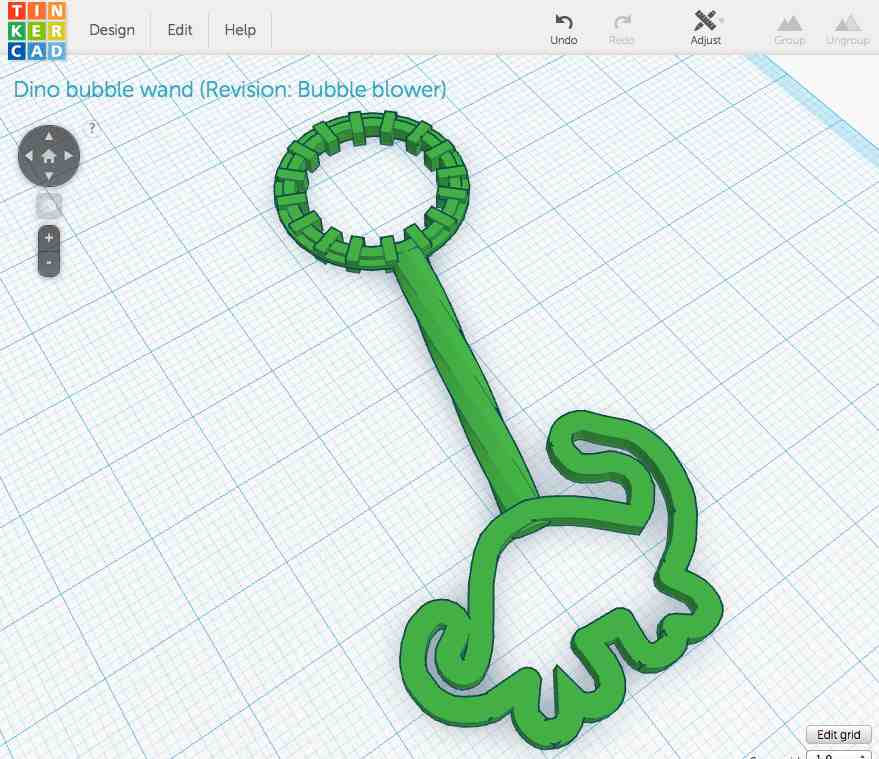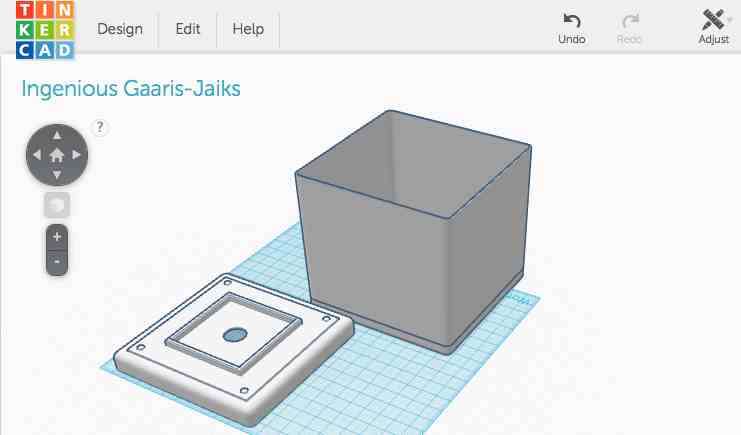Some first thoughts
Thoughts on and experiments with Computer Aided Design (CAD) programs
A couple projects
2d design: a new font, & 3d: a fast-printing activity for 3(ish)D design
I've done two nice fab-related CAD projects recently I'd like to share. This last winter I learned a free, open source font editor and produced a nice looking stencil font.

I've been wanting a good selection of stencil fonts for use with computer controlled cutting design for years now, and I just got around now to making my own! It makes making letters out of paper or stickers much, much faster, easier, and more reliable. I may get around to making a few more. The major difficulty was in figuring out how to use the font production software, since I already know enough about 2D design software to edit each letter exactly how I wanted. I used Font Forge, which, while being more difficult than pricey font software, is quite amazing. It kept all the hinting automatically, and had a great visual interface. It's an amazing open source project, and I highly recommend trying it. I did all my editing of by exporting each letter, editing it in Inkscape without moving the letter, then reimporting it into Font Forge.
My second project was creating a fast-printing design process for children to remix a bubble wand that is any shape they can draw or trace using InkScape and TinkerCAD.
2d design
Inkscape, Photoshop, Gimp, and Illustrator
Over the years I've become most comfortable with Inkscape (free, opensource, easy to code extentions for, and actively developed) and Photoshop (too expensive, but available through grad school and gets more amazing every new release) as my vector and pixel based software of choice, respectively. I like Illustrator a lot (from Adobe, like Photoshop), and its tracing options are often better than Inkscape's, but I like that Inkscape is open source and that there are some fun extra options that people I know have coded. I really dislike Gimp, but I love that it exists as a free and open source alternative to photoshop. It's not bad I suppose, but it's definitely not as smooth. I'll often work with OSX's Preview > Adjust Color or other programs for basic level curve adjustments instead of Gimp, or other free (less open source) programs like Paper for simple drawing.
I would really like to look a little more into 2D design programs that are more for engineering drafting, because neither Inkscape nor Illustrator does that very well. You can hack it to because both include editable position and size information, but it's not something they excel at.
3d design
TinkerCAD
my go-to of choice to teach with! It's colorful, fun looking, and super powerful. Supports uploading code to make procedurally generated shapes. It's beyond simple to import 2d vector graphics (to extrude into 3d) and some formats of 3d files to edit (but the units conversion and sizing get confusing). Superfast. Has fantastic algorithms for union-ing shapes, and that's what it does very well both in speed and human-machine interface (also helps that it's doing it off site on their supercomputers). Unfortunately the site has random down-times. Also, you need a free autodesk account, and they require you not be a small child to get one.
Blender
powerful but ugly.
Super for import/export. Didn't play much with the video producing options, but noted that the options are front and center. Seems slow. Seems full of options so it's easy to forget if you're in the wrong mode. Easy to import from Spore then edit (see also, below).
123Design
Tinkercad was recently bought by Autodesk, so it's new interface is really similar to other Autodesk tools like this one. So I think this is a pretty good one to upgrade from Tinkercad to (to make it easier to do more serious stuff, like importing stock parts like screws and bolts from their libraries to build more quickly).
SketchUp
I used to really like SketchUp, and it still seems an excellent (free!) simple program for mocking up things and making architectural models. But I find the tools and hot keys somewhat annoying... I can't really explain why but everything seems buried in menus and named something awkward. It's not as bad as Blender in that case, but it's getting there. I also have gotten annoyed in the past when people want to 3d print things they have mocked up in SketchUp, but all the walls have 0 thickness, as is the default. Sigh. Anyway, it works great for making brightly lit drawings of lab equipment that you want to diagram and skin. Less great defaults for 3d modeling with the intent to export and produce a 3d model of it.
Maya
Only played with Maya a little. Better for lighting and visual effects than most. Cool that it's free for educational use now.
Some fun 3d programs not mentioned!
Sculptix
free. Feels very free form. Can organically get to a sculpture quickly. Can't do any measuring or adding. But you can import, and then tweak designs like you might a ball of clay. Very, very intuitive interface. Great little program! Also, everything made in it will be nominally 3d-printable without "fixing" because of the restrictions it puts on being a solid shell.
Straight up games: Spore and Minecraft
Spore! It's that game that took you through evolution of a creature from single celled water dwelling to organized animals. Anyway, it's got a free creature creator, which was always the best part of the game anyway. The creatures need to be edited before printing, but it's a great way for people to get really creative without a lot of experience. You must edit them if you want them to be solid... but they load into Blender with handles, so you can pose them first, or create little movies with them, which is a neat bonus. And of course Minecraft, the most popular game in the world. Though not free, statistically speaking everyone know someone who has it. You can design by the pixel in it and then select areas to export as .stl (3d) files.
Things to play with more as I go
OpenSCAD, antimony, Rhino+Grasshopper, SolidWorks, Alias. I'm not sure how I escaped engineering without a formal CAD class, but I never did, and I haven't heard great things about AutoCAD.

import and extrude from 2d .svg
resize, align, reattach.

import 3d, slice in parts.
Inkscape--cool for extensions and lovely for general 2d design drawing work. Still looking for something more ideal for drafting.

Downloadables
My Ubuntu stencil font. Unlike most of my work on this site which you are free to remix and reuse for any purpose as long as you link back to me and give me credit for whatever you borrowed, I remixed this font from the Ubuntu Font. That means it falls under the Ubuntu licence. Use and remix, but you have to include their licence when you pass it on, and some other things. Also, instruction notes from when I edited the font.
Here's the above example of me messing around with a photo of a squirrel in InkScape.
The brief instructions for a successful bubble wand making lesson. And a couple example bubble wands' 2d file, 3d file, and gcode.